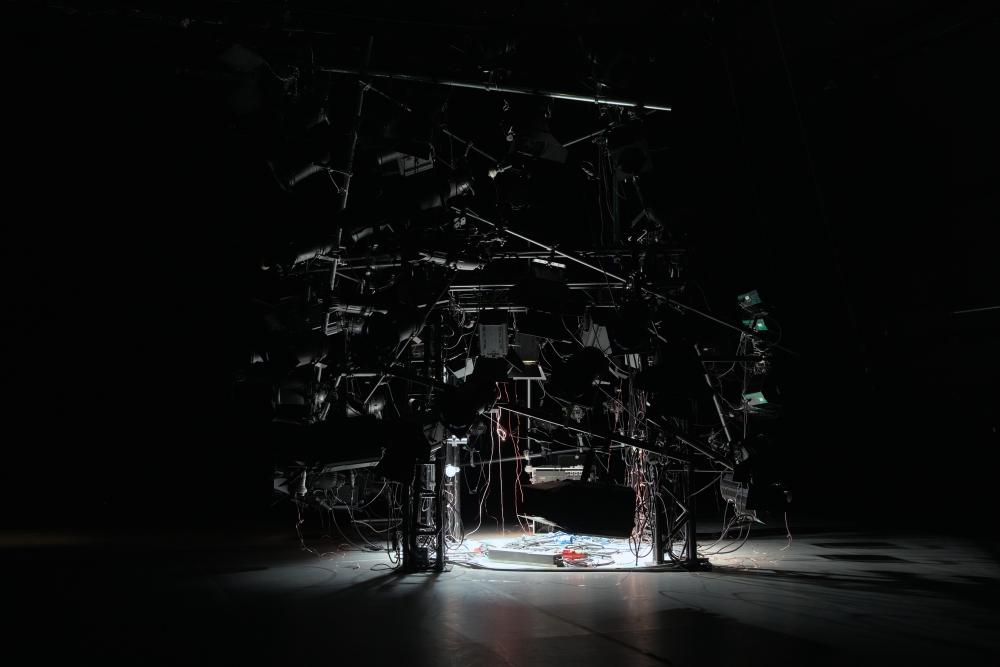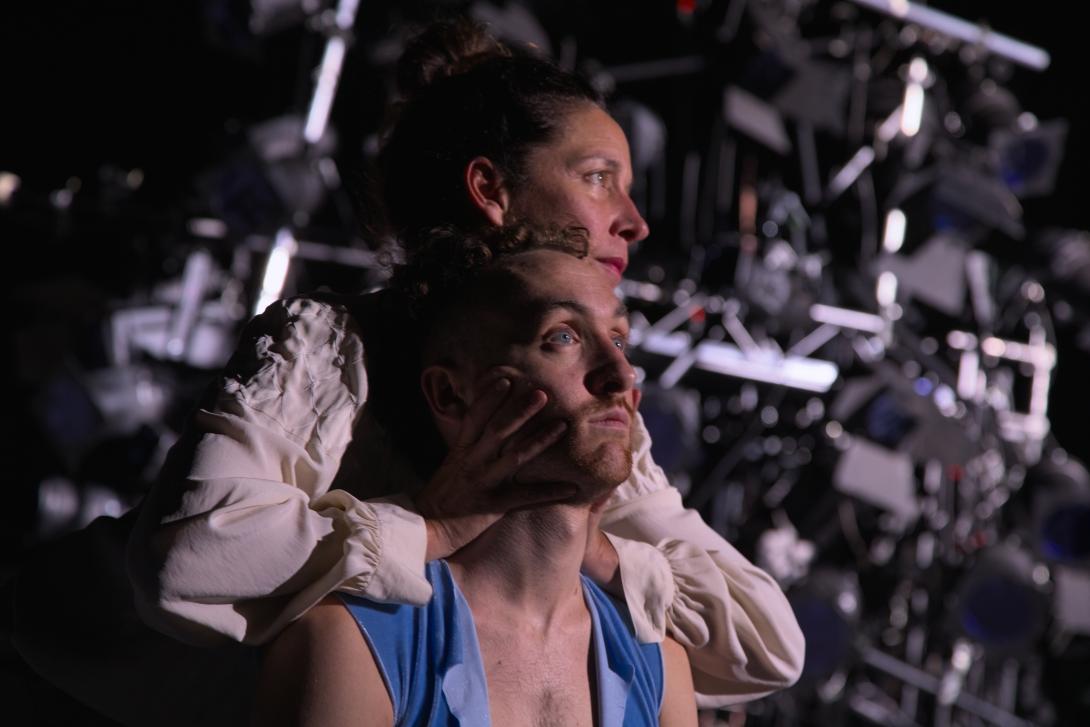BRUNO
Ici vous trouvez une déscription courte du spectacle et le générique.
My palm is here for your cheekbone
text by Olia Sosnovskaya
Using the name of the light artist Bruno Pocheron, a longstanding collaborator of Alix Eynaudi, the title of the piece — BRUNO — hints towards his special place in the work. Indeed, the choreography evolves through three dancers (Hugo Le Brigand, Mark Lorimer and Alix Eynaudi) and the light sculpture by Pocheron, encompassing the sound by Paul Kotal.
Alix Eynaudi says that she never works alone and BRUNO really is a complex ensemble, where every detail, regardless how tiny it might seem and how long it is present on stage, is essential. Visual works by the artist Cécile Tonizzo — emerging for a moment as a projection or as a textile hidden under the dance floor — are striking with their sudden appearances and reveal their echoes in the delicate and elaborate costumes by An Breugelmans. Similarly, the choreography rarely features grand moves but is instead built on multiple nuanced and intricate, sometimes surprising, gestures each of which holds equal weight.
Oscillating between light and darkness, presence and anticipation, absence and enigmatic imagery, script and accident, human and non-human agency, BRUNO plays around attention, (in)visibility and haptic. It is a gesture of uncovering, a gesture of an invitation: to look, to find, to hide, to reveal, to notice; to lean, to hold, to fall, to balance, to shift, to lie next to.
The bodies of the performers, almost never alone, lit by very bright white light crossing the space from behind the audience, appear soft, like fabric; welcoming and accommodating every touch. Every touch, every gesture of the other in the space, however fugitive, stays, as if imprinted in the bodies. And even more — the movement continues in the absence of the body; the body itself continues in the absence of the body, while its traces, its contours are carried by others.
The bodies are fluid and they are also so strong that they can carry each other; they can lift, push, and hold the weight. The slightest gesture of the fingertips can rotate the whole body.
The floor is soft, too. It is unveiled, covering Alix — concealing and displaying at the same time and it reveals another fabric, the drawing on a textile — yet another layer, another dimension.
The stage is shared with a beast-like, tangled structure — the constellation of spotlights, wires, pipes and trusses. Even before being activated with lights and sound, it is remarkably present in the space. When the room finally immerses into darkness (for the first time), one is left to imagine (the dancers’ bodies, who, we know, are there, lying down patiently, or perhaps still be moving, unnoticed) and to anticipate (the light). What unfolds in the absence of the body?
The sculpture’s multiple lights go on and off, and its choreography seems to echo the dancers’ gestures — touching the floor, the walls, the audience; reaching out in all imaginable directions. The light becomes tactile.
BRUNO makes you wonder: what is (un)seen? How to notice a tiny gesture from afar, how to grasp multiple occurrences unfolding at the same time? Sometimes, the performers (human and non-human) guide our gaze, showing direction.
The bodies are entangled, intertwined; becoming elaborated sculptures themselves — but only temporary, always unstable, always searching for new compositions. The duets and the sculpture take turns on stage, light and darkness alternate, and finally perform together in flashes of light.
I wish I wrote this text as a poem, as a song, as a scattered echo. Where each letter holds onto another, each word reverberates, trembling like the water surface, like the skin.
It is the desire of staying next to each other, of travelling through the space, together, when one’s hand takes the shape of the other’s hand. When desires are imprinted on the bodies, shaped, articulated as an assembly of gestures — as powerful and as gentle as they never been before; impossible to stay unnoticed, impossible to be unseen. Gestures that support the words and that support each other, gestures taken from the others, passed on, and continued beyond the body. How do we hold each other?
My palm is here, for your cheekbone.

